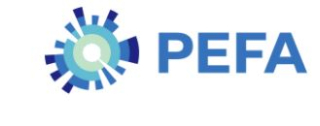Strengthening PFM Processes for Enhanced Development Outcomes
Posted by Uzma Ashraf Barton, Adam Kadir, Tim Robinson, Inés Jiménez-Ontiveros, and Joseph McGrann[1]
Strong PFM and Public Investment Management (PIM) systems support investment in key public infrastructure which is an enabler of economic growth, improved service delivery and good development outcomes. In contrast, inefficiencies in PIM processes, as measured in an IMF study, can on average lead to a 30 percent loss of return on investment. Such losses, however, can be minimized by putting in place PFM and PIM processes that are efficient, effective, and equitable while supporting emergency responses to the Covid pandemic. Over USD 14 trillion was spent globally in COVID-19 related responses in 2020.
To fully appreciate the impact of PFM processes on the efficiency of public investment and service delivery outcomes, it is essential to measure the results of PFM reforms. Existing research and empirical evidence point to the existence of positive links between the quality of PFM systems (e.g., aggregate fiscal discipline and budget credibility) and the macro-fiscal stability that is necessary for development and economic growth. However, how PFM reforms affect public investment and public service delivery is yet to be assessed.
To address this gap in existing literature, our report, using the PEFA framework, analyzed the links between PFM system strength and PIM processes. It found that countries with strengthened PFM and PIM processes are more likely to deliver improved public investment and service delivery outcomes. We also observed that this positive relationship is stronger with PEFA indicators that quantitatively capture the improvements in PFM performance. We caution that these “quantitative” indicators focus on the immediate outcomes of PFM processes (e.g., PI-1: the aggregate expenditure out-turn compared to the originally approved budget), while indicators that are more qualitative in nature only measure the existence of a PFM process (e.g., PI-12: a multi-year perspective in fiscal planning, expenditure policy and budgeting). Thus, our results highlight that the PEFA performance measurement framework captures both quantitative and qualitative elements of PFM and PIM performance.
These results could help practitioners in multiple ways. First, they can support the design of PFM strengthening programs that allow improvements in key indicators to be measured (e.g., improved budget execution, reduced in-year transfers and virements, etc.) and the outcomes to be monitored. These outcomes may then serve as a benchmark to determine the effectiveness (or otherwise) of the existing reform program and whether new measures are needed. Our research establishes that the quantifiable outcomes accurately reflect improvements to PFM strengthening programs and help measure improved PFM results as a system. However, our findings also indicate the importance of using qualitative indicators from the PFM framework to identify gaps in the current PFM or PIM system.
Second, practitioners should identify complementarities between reforms and reform prerequisites when designing and evaluating PFM reforms—e.g., reform “X” may not lead to improvements in PIM performance unless reform “Y” is set in place. Thus, reforms occurring at the same time (e.g., an improvement in procurement capacity, or in internal controls) could improve budget execution, but only if both occur.
Third, future initiatives to strengthen PFM systems should be based on the evidence of their impact on specific aspects of PFM performance and should consider the linkages between targeted and desired performance outcomes. Doing so is likely to favor reforms with clear goals and measurability. For example, the introduction of commitment controls (a clearly measurable reform) may be given priority to the introduction of multiyear budgeting if a country’s expenditure control system is weak, and the government finds it challenging to adhere to annual budget ceilings. In this case, adding a multi-year dimension to the budget planning may not yield any immediate benefits, and measurable improvements in the annual budget process should be prioritized.
While our study provides evidence that some PEFA indicators are influential in shaping PIM outcomes, we caution against over-simplifying the link between PFM processes and PIM, as doing so may create unrealistic expectations. We recommend employing a holistic approach that measures and interprets reform results contextually, and:
- Links individual reforms to broader intermediate outcomes that are quantified if possible and thus are more likely to lead to observable improvements in PIM.
- Takes account of the PFM/PIM practices of countries at similar levels of development and with related institutional and legal characteristics and practices.
- Considers complementary analysis provided by other tools and studies, such as the country notes included in PEFA assessments, to provide a qualitative, deeper understanding of country dynamics and governance arrangements.
The research report, “Analyzing the Link between PFM System Strength and Public Investment Performance”, authored by Nathan Associates Inc., is a product of PEFA sponsored Research Competition as part of PEFA RESEARCH PAPER SERIES. The findings of the research were presented at a webinar hosted by PEFA Secretariat.
[1] Nathan Associates Inc.
Note: The posts on the IMF PFM Blog should not be reported as representing the views of the IMF. The views expressed are those of the authors and do not necessarily represent those of the IMF or IMF policy.








